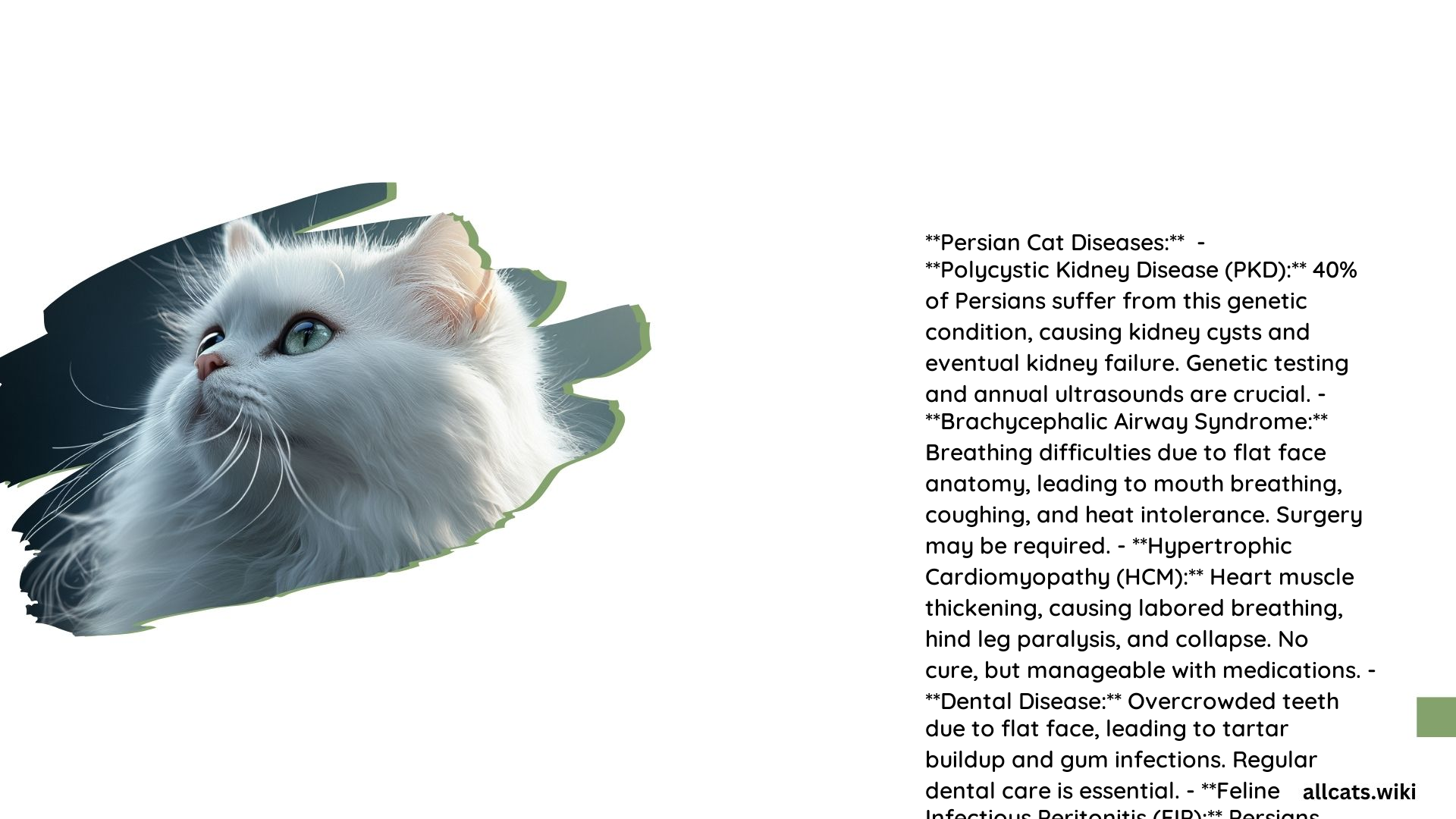Persian Cat Diseases: Navigating the Common Health Challenges
Persian cats are beloved for their striking appearance, but their unique physical traits can also make them prone to various health issues. From polycystic kidney disease to brachycephalic airway syndrome, understanding the common diseases affecting Persian cats is crucial for their well-being. In this comprehensive guide, we’ll explore the most prevalent health concerns, their symptoms, management strategies, and preventive measures to help you keep your feline friend happy and healthy.
What is Polycystic Kidney Disease (PKD) in Persian Cats?
Polycystic Kidney Disease (PKD) is a highly prevalent condition in Persian cats, affecting approximately one-third of the breed. This genetic disorder is characterized by the formation of fluid-filled cysts in the kidneys, which can gradually impair their function over time. Symptoms of PKD include increased thirst and urination, diminished appetite, weight loss, nausea, vomiting, and lethargy.
How to Diagnose and Manage PKD in Persian Cats?
Diagnosing PKD can be done through an ultrasound examination of the kidneys or a genetic test. While there is no cure for PKD, the condition can be managed through various means, such as the use of antibiotics, fluid therapy, appetite stimulants, dietary adjustments, and pain medications. Regular veterinary check-ups and monitoring are essential to ensure the best possible care for Persian cats with PKD.
What is Hypertrophic Cardiomyopathy (HCM) in Persian Cats?
Hypertrophic Cardiomyopathy (HCM) is another common health concern in Persian cats, leading to heart failure and potentially sudden death. Symptoms of HCM include labored breathing, hind leg paralysis, and collapse. While there is no cure for HCM, medications can help manage the symptoms, and regular veterinary check-ups, including echocardiograms, are crucial for early detection and monitoring.
How to Manage Brachycephalic Airway Syndrome in Persian Cats?
Brachycephalic Airway Syndrome is a condition that affects nearly all brachycephalic breeds, including Persians, due to their flat faces. Symptoms include mouth breathing, trouble breathing, coughing, snorting, difficulty eating, and vomiting. Depending on the severity, management can range from home care, such as keeping the cat cool and ensuring proper airflow, to surgical intervention.
Addressing Dental Disease in Persian Cats
Dental disease is a common issue in Persian cats, primarily due to their short faces and misaligned teeth. Symptoms include mouth pain, poor appetite, lack of grooming, bad breath, and infection. Regular dental care, including daily brushing and professional cleanings, is essential to prevent and manage dental problems in Persian cats.
Maintaining Eye Health in Persian Cats
Persian cats are prone to eye issues, such as corneal sequestra and persistent discharge due to malfunctioning tear ducts. Symptoms include painful eyes, persistent discharge, and potential eye rupture if left untreated. Proper eye and face cleaning, along with regular veterinary check-ups, are crucial for maintaining the eye health of Persian cats.
Prevention and Management Strategies
To keep your Persian cat healthy, it’s essential to follow a comprehensive approach that includes regular veterinary care, a balanced diet, proper grooming, dental care, and environmental considerations. By staying proactive and addressing any health concerns early, you can help your feline friend live a long and fulfilling life.
Costs and Schedules
Caring for a Persian cat’s health can come with various costs, including genetic testing, regular veterinary check-ups, dental care, and grooming. It’s important to budget for these expenses and follow the recommended schedules to ensure your cat receives the necessary care.
Recommended Products
To support your Persian cat’s health, consider using specialized dental care products, grooming tools, and nutritional supplements as recommended by your veterinarian.
By understanding the common health challenges faced by Persian cats and taking proactive steps to address them, you can help ensure your feline companion enjoys a happy and healthy life. Remember, regular veterinary care, diligent grooming, and a commitment to your cat’s well-being are the keys to a long and fulfilling partnership.
References:
1. Persian Cat Health Issues
2. How Healthy Are Persian Cats?
3. 7 Common Persian Cat Health Issues

